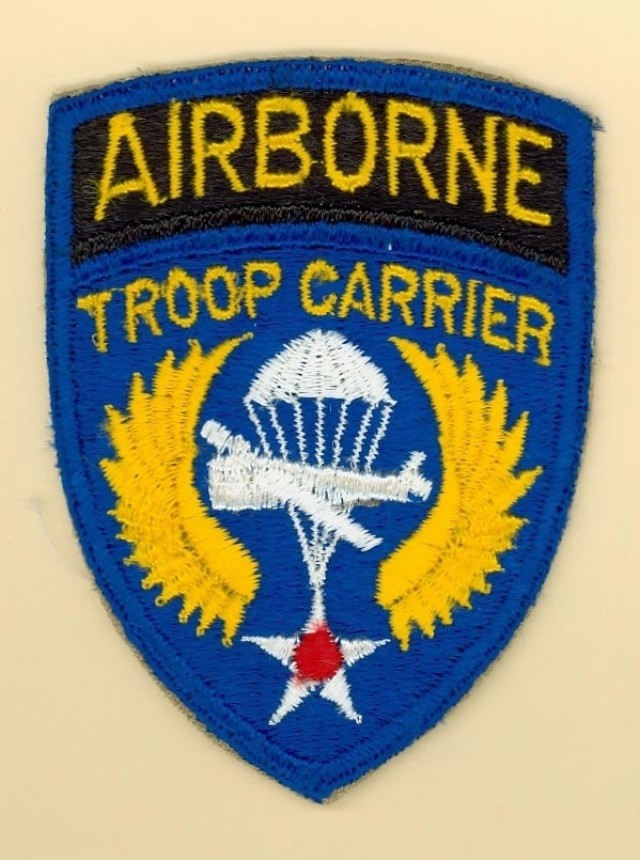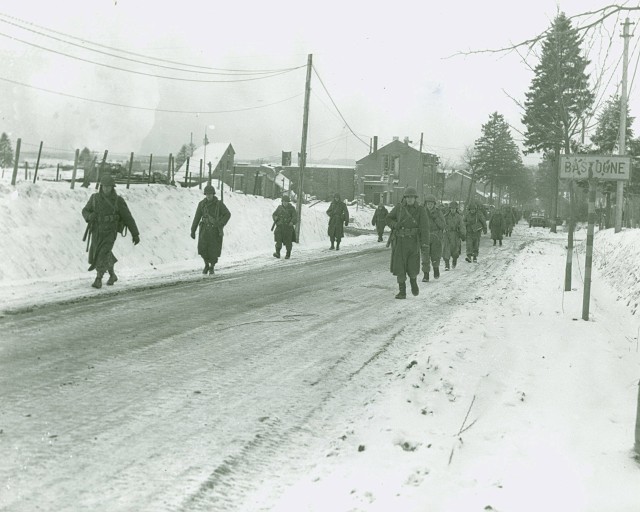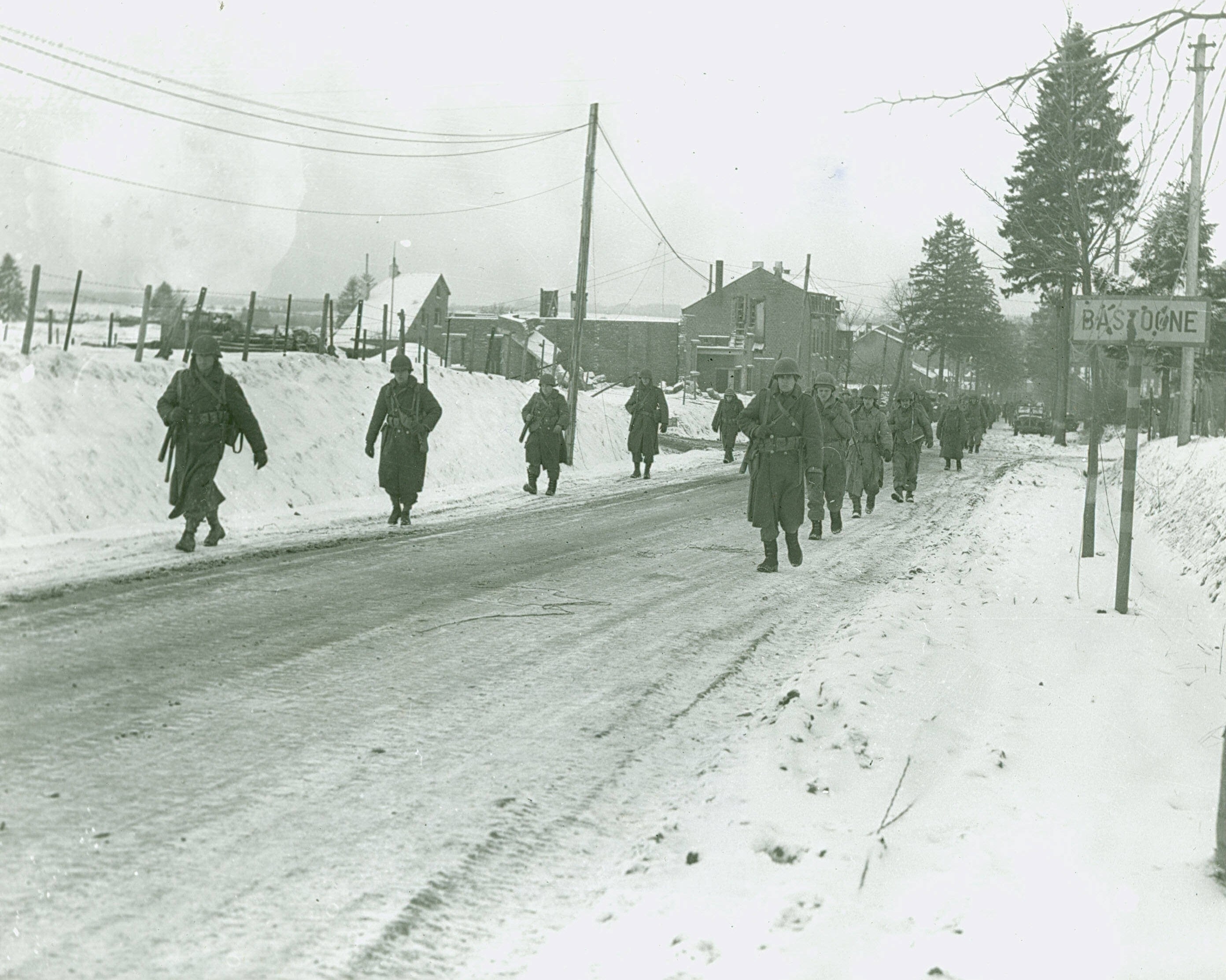On December 16, 1944, German troops launched the great strategic counter-offensive that came to be known as "the Battle of the Bulge." They swept through and around the dense Ardennes forest, across the formidable Schnee Eifel, and along key roadways north and south of that promontory, aiming towards the River Meuse and the heart of the Allied line advancing eastward. Among the Allied responses to this threat from the east, elements of the First Allied Airborne Army were rapidly brought forward to help halt the German advance. Included in that command's assets was the 101st Airborne Division, which was assigned to hold the tactically significant road convergence at Bastogne. Elements still based in Britain, the 17th (US) and 6th (British) Airborne Divisions, were ordered to move by air, thereby compounding the already tenuous Allied logistical problems created by the summer decision to move toward the German frontier along two axes.
Those logistical problems of reinforcing and re-supplying embattled troops and of resisting German attacks were hampered even more by foul weather. Allied units and their reinforcements quickly ran low on war-making and sustenance supplies. From December 18 to 22, the Ninth Air Force was able to mount only 1186 bombing sorties against the German "bulge" developing along Allied lines. Efforts at supply drops were hindered by poor communications, bad flying weather, and shortage of transport planes, many of which were moving troops from the United Kingdom. As personnel from the 101st Airborne fought to hold the key position at Bastogne it became surrounded, and the town's situation became critical. On December 22, General Patton requested that re-supply of the 101st "have first priority in all re-supply operations."
A break in the weather the next day allowed full air-based operations to proceed. Over the next five days, there were 8,608 sorties. At first light on December 23, two aircraft of the IX Troop Carrier Command dropped pathfinder teams over Bastogne, and from that time onward, re-supply drops over Bastogne were successful. A total of 260 aircraft dropped 334 tons of materiel by parachute. The most urgent need, artillery ammunition, could not be efficiently packed in parachute containers. Gliders left over from the invasions of Normandy and Holland were used for the ammunition, because they did not require the intricate container packing. Thirty-five gliders, carrying 103 tons of re-supply, were flown through heavy FLAK on December 27, alone. However, weather again intervened, curtailing all flying the following day. Only 536 sorties flew on December 29, and 538 the next day, but by then Patton's column from the south had relieved the 101st. At the end of December all further airborne re-supply to the division was canceled.
The success of the re-supply of Bastogne cannot be measured in numbers alone, but the numbers are telling: 1020.7 tons of supplies and equipment (including 4900 gallons of gasoline) were dropped to the 101st Airborne by parachute, and 92.4 tons (including 2975 gallons of gasoline) were landed by glider. The success rate of the drops was estimated at 94.06%. First Allied Airborne Army's official report of the operation concluded, "These operations clearly established that, despite unfavorable weather, aerial re-supply of units of division strength isolated in enemy territory within a reasonable distance of friendly lines, can be effectively accomplished." Logistically, strategically, and tactically, Allied air and land forces worked together to win the Battle of the Bulge.






Social Sharing